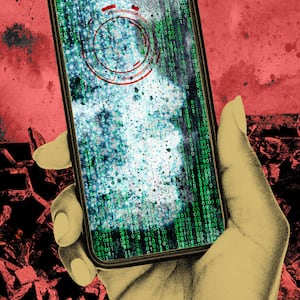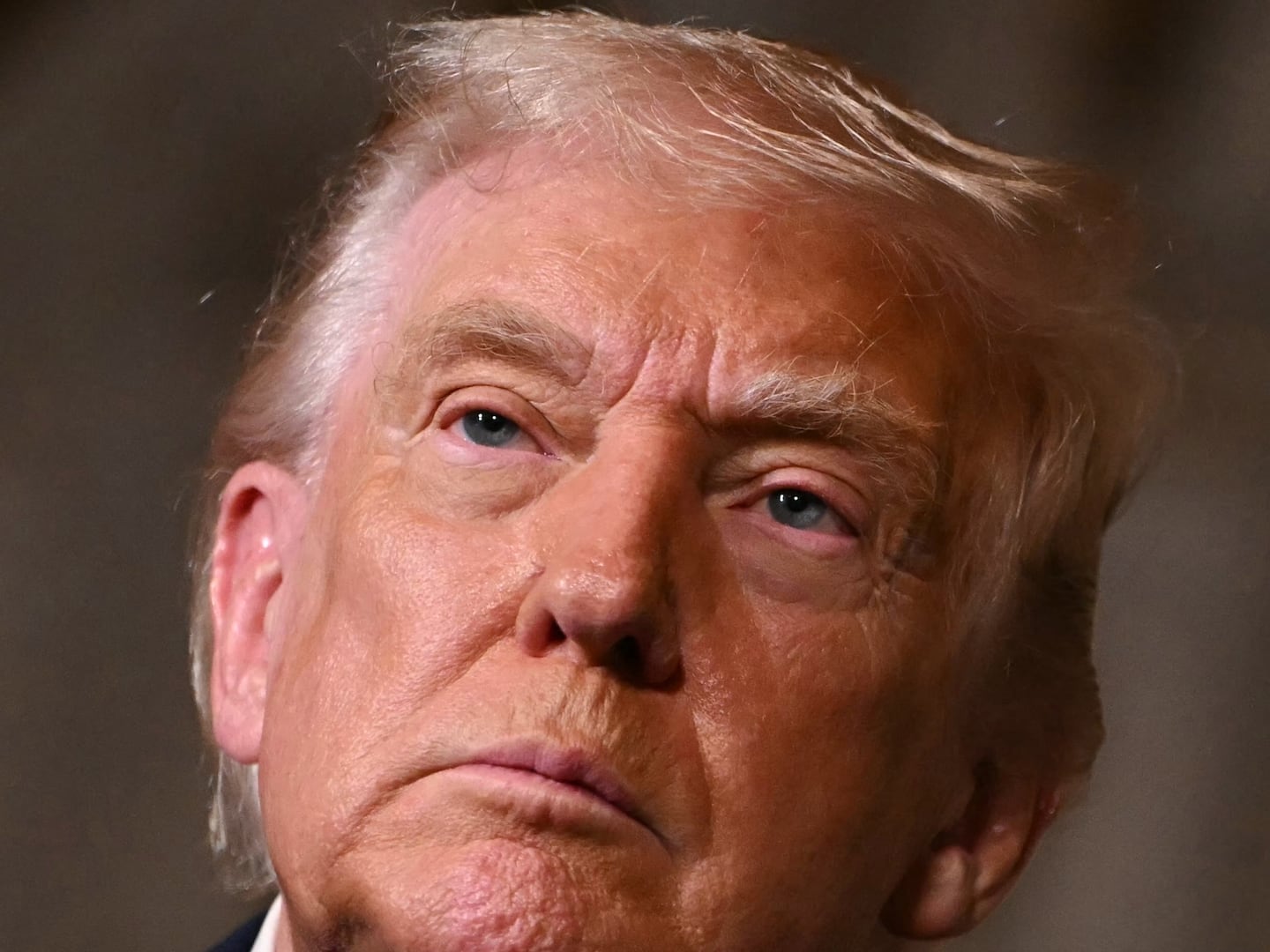You’ve likely already been schooled on how to spot a deepfake, a dangerous but relatively immature artificial intelligence tool. Are there odd shadows or glares? Are the lips synced up with the audio? Are there too many or too few fingers on the hands?
But as Israel and Hamas wage war on both a physical and digital battlefield, disinformation experts are ringing the alarm about deepfakes’ easier-to-deploy and far more ubiquitous cousin: cheapfakes.
“Cheapfakes are much more dangerous, because the images are real. And therefore, they're more believable,” Tamara Kharroub, who helps head the Arab Center Washington DC as a Middle East media researcher, told The Daily Beast.
Cheapfakes are exactly what they sound like: cheaply manipulated content. The tactic involves decontextualizing, distorting, or manipulating pre-existing audio, images, or videos with the use of readily available digital software like Photoshop or iMovie.
There’s a good chance you’ve already seen them. It can be as simple as posting an image from an entirely different conflict or region with a misleading caption, placing incorrect subtitles onto a video, or cropping an image to remove crucial context. Compared to deepfakes, cheapfakes require a fraction of the money or technical knowledge to produce, and so knowing how to spot them can go a long way toward stemming disinformation.
“The people who work to spread propaganda online and influence people online are pragmatic,” Samuel Woolley, founding director of the Digital Intelligence Lab, told The Daily Beast. “They want to use the cheapest technology available and to get the job done most of the time.”
Many easy-to-produce cheapfakes have circulated since Oct. 7 and been viewed millions of times. For example, there was an image of a digitally altered memo showing President Joe Biden authorizing $8 billion in military aid to Israel, a video of Turkish President Recep Tayyip Erdogan with doctored subtitles saying he was “ready to defend Palestine at any price,” and an image posted by Rep. Marjorie Taylor Greene (R-GA) displaying a pro-Palestinian protester messaging in a groupchat titled “Global Intifada.”
A simple zoom-in on Greene’s image revealed that the Whatsapp messages arrived in a nonsensical order—first at 12:40, then 12:04, then 12:55. However, that didn’t stop The Federalist from running a story based on the tampered image, titled “SPLC Lead Attorney Apparently Participated in Unlawful Capitol Anti-Israel Protest” with the name of one of the purported group members.
This type of fake content has real consequences. Experts say cheapfakes can ultimately contribute to the dehumanization of entire groups of people, including Israelis and Palestinians, Jews and Arabs. A European Union commissioner warned in October that disinformation “carries a clear risk of stigmatizing certain communities and destabilizing our democratic structures.”
“We've seen images of children in cages that were claimed to be Israeli children taken hostage in Gaza, and those were from Syria from 2016,” Kharroub said. “These kinds of narratives have been adopted and continue to be repeated by senior politicians, government officials that are involved in decision-making—and to some extent, they are being used to justify the targeting of civilians on the Palestinian side.”
Filling the (Mis)Information Vacuum
The Israel-Hamas war has created a perfect storm for bad actors to distort and deceive online. Dina Sadek, who tracks content related to the conflict for the Digital Forensic Research Lab, told The Daily Beast that she’s seen “a new level of disinformation” since Oct. 7. There’s a few reasons for this. First, and most broadly, research shows that disinformation often spikes during times of crises, like wars, natural disasters, and contentious elections.
But, specifically in this conflict, there’s a lack of access to good, verifiable information which creates a vacuum for bad actors to exploit. Few journalists are on the ground in Gaza and the ones there face immense danger in reporting out the facts. The first month of the war has already been the deadliest for reporters since the Committee to Protect Journalists started tracking deaths in 1992.
Last month, journalists from CNN, BBC News, The New York Times, and other organizations signed an open letter asking Israel and Egypt for more access to the Gaza Strip, calling out “the need for more journalists to document events on the ground... particularly when so much information is being shared informally via social media,” according to CNN.
There’s also psychological factors that make people more prone to cheapfakes. Because we surround ourselves online with people who think and feel similarly to us, research shows we’re unlikely to cast doubt on images or videos that reaffirm our pre-existing beliefs. That’s confirmation bias at play.
“Someone who is anti-Israel is never going to double-check something that makes Israel look bad,” Julie Smith, a media literacy expert and Webster University professor, told The Daily Beast. “Or if someone is anti-Hamas, it’s the same thing.”
Lastly, the emotional nature of the Israeli-Palestinian conflict, which has dragged on for decades and claimed tens of thousands of lives, tightens users’ information blinders. This type of emotional social media consumption isn’t a bug—it’s an algorithmically coded feature.
“The longer that we stay online, the more money the platforms make and the platforms all have research that if we are angry or upset, we stay online longer,” Smith said. “So the platforms are under no compunction or obligation to prevent false information that could get us really emotionally worked up.”
So what’s to be done about the maelstrom of cheapfakes disseminating online? As Smith explained, expecting the platforms to solve the problem themselves is unlikely. Since Elon Musk acquired X, formerly known as Twitter, he gutted the platform’s content moderation team. Google and Meta have both followed suit.
Expecting governments to regulate cheapfakes probably won’t happen anytime soon either, Woolley said. For now, the onus mostly falls on users.
“It’s up to us,” Smith said. “And that’s where it gets tricky. Because we need to start really looking closely at these messages and asking these questions about the messages. Who’s the sender? Does the photo have attribution with it? Where did it come from? How is it designed? How does it make me feel? Who benefits from this? What information is left out?”
Trying to discern where an image originates from can be a good firewall against cheapfakes. There are some digital tools like a reverse image search that can help users locate an image’s original source. But they don’t always get the answer right and can’t be completely relied upon.
The No. 1 media-literacy tip experts offer, though, is one that would behoove us all to listen to—regardless of whether or not you’re on the lookout for cheapfakes: Slow down and watch your emotions.
“If the image or the video kills you inside, try your best to fact-check it before you start crying or before you decide to share it to your community,” Dina Ibrahim, a media professor who spent years reporting across the Middle East, told The Daily Beast. “Just know that the proportion of truth to fake is increasing in the fake’s favor.”








